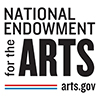online art suitcase
Three teen Girls Walking Along A Path by Ken Blackbird
1992, Color Photograph,
15.5x 23”,
Gift of the artist,
David Orser and Ossie Abrams
(2002.5)
More Info
About The Artist: Ken Blackbird (Gros Ventre/Assiniboine)
Ken Blackbird grew up on the Fort Belknap Indian Reservation in North-Central Montana. He spent time as a welder in Texas and a forest ranger and fire fighter in Yellowstone before graduating from University of Montana with a degree in journalism. It was working for a newspaper that eventually led him to photography. Ken Blackbird is Assiniboine/Gros Ventre and an enrolled member of the Fort Belknap Indian Community of Montana. He has been a photojournalist and freelance photographer for over 30 years. In his photography, he focuses on light, layers and the people themselves. He strives to capture people as they truly are: the way they should be. Ken Blackbird currently lives and works as a photographer in Cody, Wyoming.
Click here to visit Ken’s Website
Guiding Questions and Vocabulary
QUESTIONS FOR VIEWING:
First, always take a few moments to really look at the artwork.
VTS Questions
- What do you think is going on in this picture?
- What do you see that makes you say that?
- What else do you see in this picture?
Additional Questions
- What type of art is this?
- For example, is it a painting? (photography) How can
you tell?
- For example, is it a painting? (photography) How can
- Has anyone been to a powwow?
- What do you see at powwows?
- Powwows can be different for each tribe.
- What do you see at powwows?
ART VOCABULARY:
- Landscape: All the visible features of an area of countryside or land.
- Photograph: A picture made using a camera, in which an image is focused onto film or other light-sensitive material and then made visible and permanent by chemical treatment, or stored digitally.
- Radial Pattern: Any type of pattern based on a circle with its design extending from center.
- Balance: The distribution of the visual weight of objects, colors, textures, and space. If the design was a scale, these elements should be balanced to make a design feel stable.
- Symmetry: Elements (shapes or forms) used on one side of a design is also used in a similar way on the other side of the design.
- Repetition: The use of two or more like elements or forms or shapes within a composition. The systematic arrangement of a repeated shapes or forms creates pattern.
IEFA VOCABULARY:
- Powwow: (See Your Guide to Understanding and Enjoying Powwows)
- Assiniboine: (See Montana Indians, their History and Location – Fort Belknap)
- Gros Ventre: (See Montana Indians, their History and Location – Fort Belknap)















